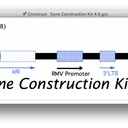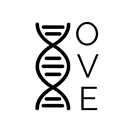Top DNAssist Alternatives for Seamless Sequence Analysis
DNAssist has long been a go-to tool for molecular biologists, offering an intuitive, single interface for sequence file display, editing, and analysis. Its comprehensive features, from converting DNA to RNA or protein sequences to performing restriction enzyme analysis and locating ORFs, make it a powerful Windows application. However, as technology evolves and diverse user needs emerge, exploring robust DNAssist alternatives becomes essential. Whether you're looking for cross-platform compatibility, specific advanced features, or a more budget-friendly option, there are many excellent solutions available.
Top DNAssist Alternatives
If you're seeking to enhance your bioinformatics workflow or simply need a different approach to sequence manipulation and analysis, these alternatives offer compelling features and diverse platforms to suit your research requirements.

SnapGene Viewer
SnapGene Viewer is a revolutionary software that allows molecular biologists to create, browse, and share richly annotated DNA sequence files. As a free personal application available on Mac, Windows, and Linux, it offers a great cross-platform DNAssist alternative for visualizing and sharing genetic information.

Geneious
Geneious combines all the major DNA and protein sequence analysis tools into one powerful software solution. This commercial DNAssist alternative is available on Mac, Windows, and Linux, providing comprehensive sequence analysis and visual editing capabilities, making it ideal for professional researchers.

Chromas
Chromas is a simple, easy-to-use viewer and editor for sequencing chromatograms. Available as a freemium application on Windows, it's a solid DNAssist alternative for those primarily working with chromatogram analysis and offers useful batch processing features.

BioEdit
BioEdit is a biological sequence alignment editor designed for Windows. This free DNAssist alternative provides an intuitive multiple document interface with convenient features, making it a reliable choice for sequence alignment tasks on Windows systems.

ApE - A plasmid Editor
ApE (A plasmid Editor) is a science application specifically designed for plasmid editing. This free DNAssist alternative is available on Mac and Windows, highlighting restriction sites and accurately reflecting Dam/Dcm blocking of enzyme sites, making it excellent for molecular cloning.

Genome Compiler
Genome Compiler is an easy-to-use genetic design platform that allows researchers to manipulate and design everything from single genes to entire genomes. As a freemium DNAssist alternative, it offers broad compatibility across Mac, Windows, Web, and Chrome OS, providing flexibility for various research environments.

DNADynamo
DNADynamo is a commercial software for Windows, OSX, and Linux, offering robust features for abi/scf trace alignments, subcloning, plasmid management, and sequence annotation. It's a powerful DNAssist alternative, especially for those needing comprehensive sequencing capabilities across multiple operating systems.

GENtle
GENtle is an open-source, free software for DNA and amino acid editing, database management, plasmid maps, restriction and ligation, and more. Available on Mac, Windows, and Linux, it's a versatile DNAssist alternative for researchers looking for a comprehensive and accessible tool without commercial licensing.

Gene Construction Kit
Gene Construction Kit® (GCK) is a useful freemium tool for plasmid mapping, cloning simulation, and DNA analysis. Available on Mac and Windows, it has been consistently reviewed as one of the best DNAssist alternatives for researchers focused on genetic construct design.

Open Vector Editor Electron
Open Vector Editor Electron is a simple, file-based GenBank/FASTA file viewer and editor. This free and open-source DNAssist alternative works seamlessly across Mac, Windows, and Linux, making it a great option for basic sequence file handling and editing.
With a wide array of DNAssist alternatives available, you can find the perfect software to meet your specific bioinformatics needs. From free and open-source options to commercial powerhouses, each tool brings unique strengths to the table. Explore these options to discover the best fit for your research workflow and continue advancing your genetic analysis with confidence.